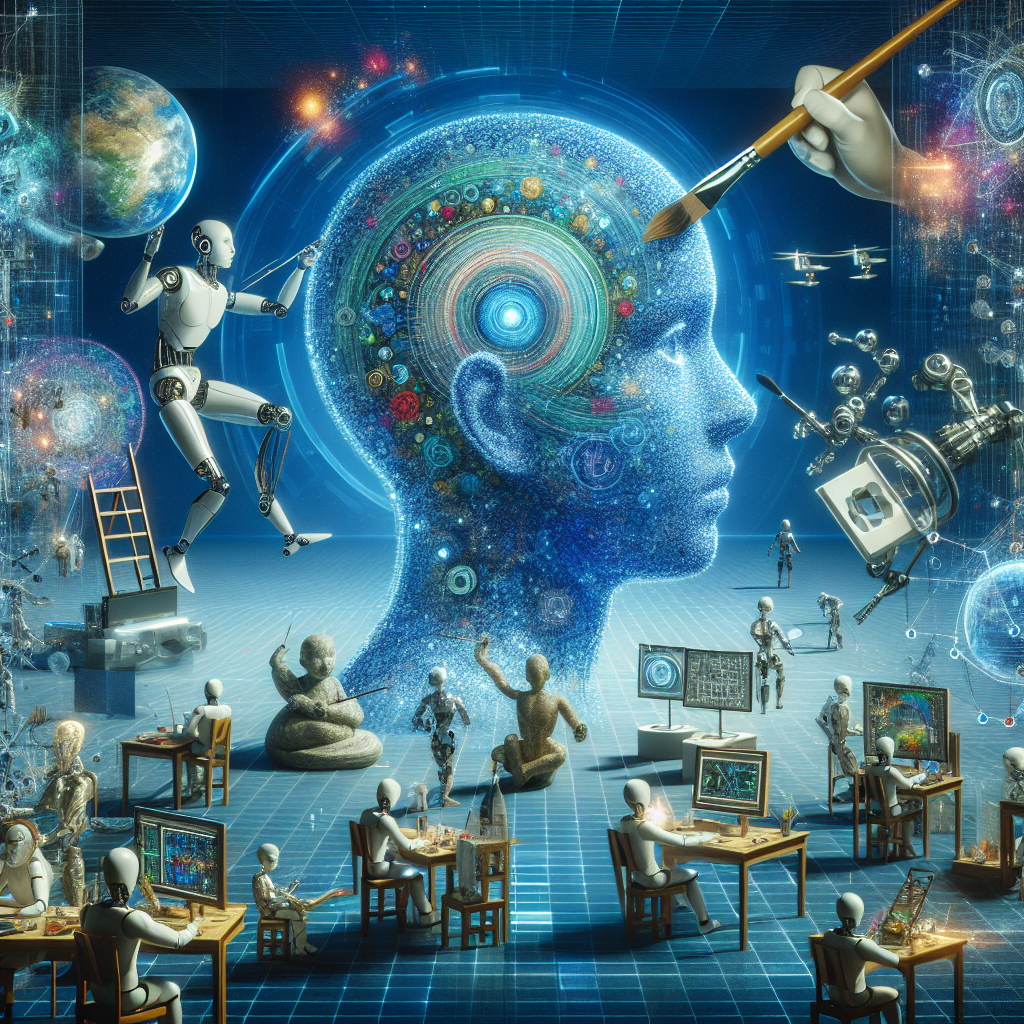Artificial intelligence (AI) has been a game-changer in many industries, from healthcare to finance to transportation. But one area where AI is really pushing the boundaries of innovation is in the realm of creativity. AI is being used to create music, art, literature, and even fashion, opening up a whole new world of possibilities for the future of creativity.
AI and Creativity: A New Frontier for Innovation
One of the most exciting developments in the intersection of AI and creativity is the use of generative adversarial networks (GANs) to create art. GANs are a type of AI algorithm that consists of two neural networks, one that generates new content and another that discriminates between real and generated content. By pitting these two networks against each other, GANs can create incredibly realistic images, music, and even text.
One of the most famous examples of AI-generated art is the portrait “Edmond de Belamy” created by the Paris-based art collective Obvious. The portrait was created using a GAN trained on a dataset of 15,000 portraits from the 14th to the 20th century. The resulting image was so convincing that it sold at auction for $432,500, far surpassing its estimated value of $7,000 to $10,000.
But AI isn’t just limited to creating visual art. It’s also being used to compose music, write poetry, and even design fashion. For example, the music streaming service Spotify uses AI algorithms to recommend songs to users based on their listening habits. These algorithms analyze millions of data points to predict what songs a user will like, making music discovery easier and more personalized than ever before.
In the world of literature, AI is being used to generate text that mimics the style of famous authors. The OpenAI language model GPT-3, for example, is capable of writing creative stories, poems, and even essays that are indistinguishable from human-written content. This has the potential to revolutionize the writing process, making it faster and more efficient for authors to create new works.
Even in the world of fashion, AI is making waves. The fashion brand Carlings created a digital clothing collection called “Neo-Ex” that customers could try on using augmented reality. This allowed customers to experiment with different styles and looks without having to physically try on clothes, reducing waste and carbon emissions associated with traditional fashion production.
But perhaps the most exciting aspect of AI and creativity is the potential for collaboration between humans and machines. AI can be used as a tool to enhance human creativity, helping artists, musicians, writers, and designers to push the boundaries of their craft. By working together, humans and AI can create new forms of art and culture that would be impossible to achieve on their own.
FAQs
Q: Can AI truly be creative?
A: While AI can generate content that is indistinguishable from human-created content, the question of whether AI is truly creative is still up for debate. Some argue that AI is simply mimicking patterns and styles that it has learned from human data, while others believe that AI can exhibit true creativity through its ability to generate novel and unexpected content.
Q: Will AI replace human creativity?
A: While AI has the potential to augment and enhance human creativity, it is unlikely to replace it entirely. Human creativity is deeply rooted in emotion, intuition, and imagination, qualities that are difficult for AI to replicate. Instead, AI is more likely to be used as a tool to support and inspire human creativity, rather than supplant it.
Q: Is AI-generated art valuable?
A: The value of AI-generated art is a matter of personal interpretation. Some believe that AI-generated art lacks the emotional depth and meaning of human-created art, while others see it as a new form of creative expression that pushes the boundaries of what is possible. Ultimately, the value of AI-generated art will depend on the individual viewer’s perspective.
Q: What are the ethical implications of AI and creativity?
A: As AI becomes more integrated into the creative process, there are a number of ethical considerations to take into account. These include issues of authorship, copyright, and ownership of AI-generated content, as well as concerns about bias and representation in AI algorithms. It is important for creators and technologists to consider these ethical implications as they continue to explore the frontier of AI and creativity.
In conclusion, AI and creativity are opening up a new frontier for innovation in art, music, literature, and fashion. By harnessing the power of AI algorithms like GANs and language models like GPT-3, creators are able to push the boundaries of what is possible in the realm of creativity. While there are still many questions and challenges to be addressed, the potential for collaboration between humans and machines is immense, offering new opportunities for artistic expression and cultural innovation.

